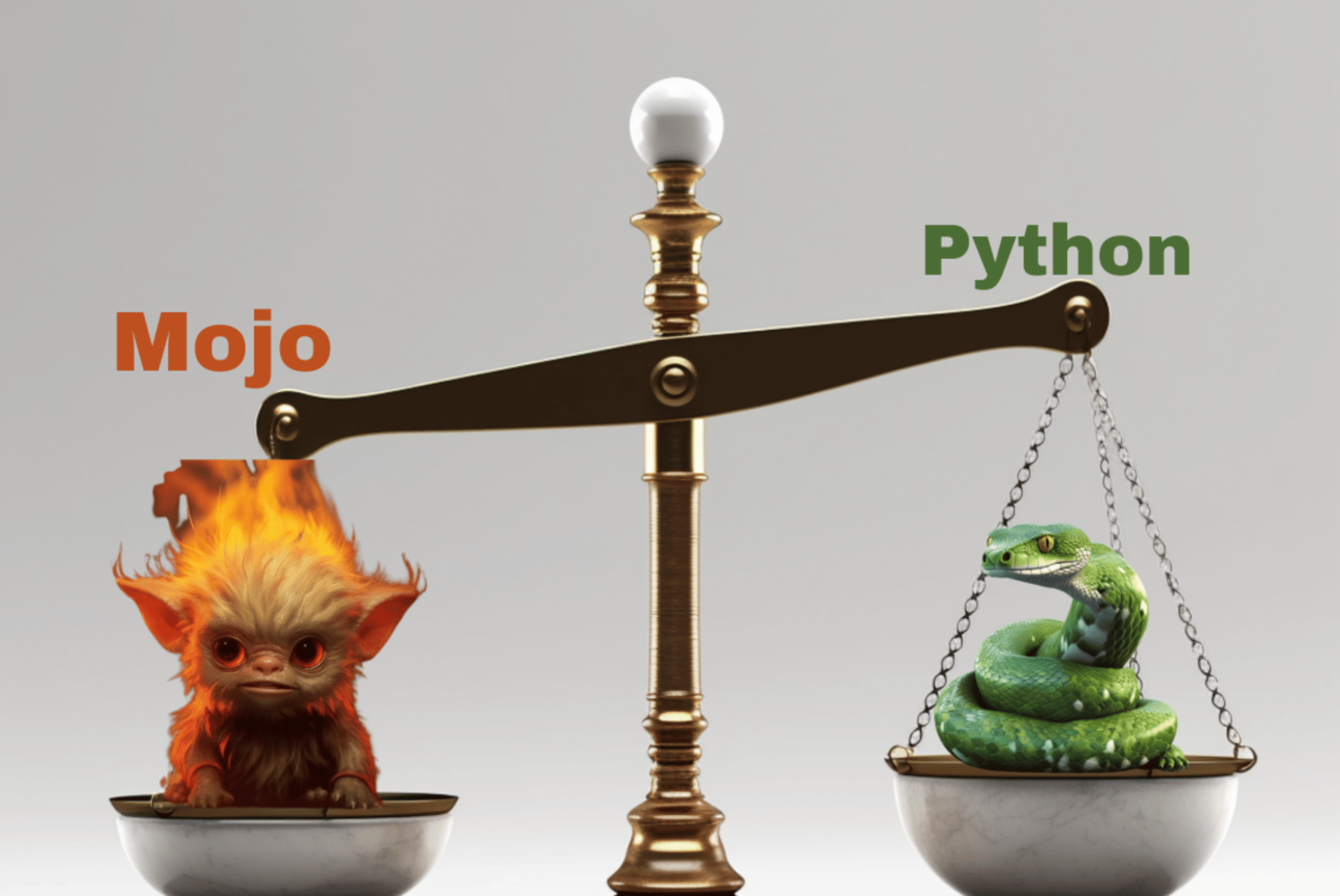
Python vs. Mojo: Deciphering the Best Language for AI Development
In the dynamic landscape of Artificial Intelligence (AI), the choice of programming language can significantly impact a developer's workflow and project outcomes. Python and Mojo emerge as prominent contenders, each offering unique advantages tailored to specific development needs. In this comprehensive analysis, we delve into the key considerations to help you navigate this critical decision.
TECHNOLOGY
Vinodh Nagarajaiah
6/16/20243 min read
Learning Curve and Development Speed:
Python: Renowned for its beginner-friendly nature, Python boasts crystal-clear syntax and a strong emphasis on readability. Abundant online resources and a thriving community accelerate the learning process, empowering developers to swiftly translate concepts into functional code.
Mojo: Leveraging Python’s familiar syntax, Mojo facilitates a smooth transition for developers already proficient in Python. However, as a newer language, Mojo’s support infrastructure may not be as robust, requiring developers to exhibit greater self-reliance or await community-driven solutions.


Performance and Scalability:


Photo by Techivation on Unsplash
Python: Python’s interpreted nature, while offering flexibility during development, becomes a bottleneck when dealing with computationally intensive AI tasks. Training complex models or running large-scale simulations can expose Python’s performance limitations, especially as data volumes grow. Additionally, scaling AI applications built with Python to handle massive datasets on distributed systems can become cumbersome.
Mojo: This is where Mojo truly shines. Its compiled nature and utilization of MLIR enable parallel processing across multiple cores and hardware accelerators. This translates to significant performance gains for AI applications, making Mojo ideal for computationally heavy tasks like deep learning and complex model training. Mojo’s scalability is also a strong point, as its ability to leverage distributed hardware architectures allows AI applications to handle ever-growing datasets efficiently.
AI-Specific Functionality:


Photo by Igor Omilaev on Unsplash
Python: Python boasts a rich ecosystem of established AI libraries like TensorFlow and PyTorch. These libraries offer a treasure trove of pre-built functionalities for various AI tasks, streamlining development. Developers can leverage these libraries to rapidly build complex AI models without reinventing the wheel, significantly accelerating the development process.
Mojo: While Mojo offers core AI functionalities like automatic differentiation for efficient gradient calculations, its library collection is still under development. Developers might need to create custom functions or wait for the community to develop more comprehensive libraries to address specific AI needs. However, Mojo’s core design allows for seamless integration with existing Python libraries, enabling developers to leverage the power of both ecosystems.
Community and Support:


Photo by Nathan Dumlao on Unsplash
Python: Python’s immense popularity translates to a robust and active community. Developers have access to a wealth of tutorials, forums, and solutions for nearly any coding challenge they might encounter. This extensive support network makes Python a particularly attractive choice for beginners or those working on projects requiring readily available solutions and troubleshooting assistance.
Mojo: Mojo’s community, though rapidly growing, remains smaller compared to Python’s. While official documentation provides a solid foundation, developers venturing into uncharted territory might find limited community support for troubleshooting or complex use cases. This factor necessitates a certain level of self-reliance or a willingness to invest time in exploring the available documentation and resources.
Choosing the Right Tool for the Job


Photo by Lachlan Donald on Unsplash
Select Python if: Your project prioritizes ease of learning and rapid prototyping. Performance requirements are moderate, and leveraging a vast developer community for support is crucial.
Consider Mojo if: Performance is paramount, your team has strong Python expertise and enjoys exploring cutting-edge technologies. You’re comfortable with a developing community and willing to invest time in understanding a new language.
A Collaborative Approach


Photo by Austin Distel on Unsplash
In some cases, a hybrid approach using both languages can be the optimal strategy. Python’s ease of use can expedite the prototyping and initial development stages, while Mojo can handle demanding computational tasks later in the pipeline. This allows developers to leverage the strengths of each language for a well-rounded development process.
Ultimately, the choice between Python and Mojo hinges on your project’s specific requirements, your development team’s skillset, and your tolerance for a developing language ecosystem. By carefully considering these factors, you can make an informed decision that empowers you to build groundbreaking AI applications.



